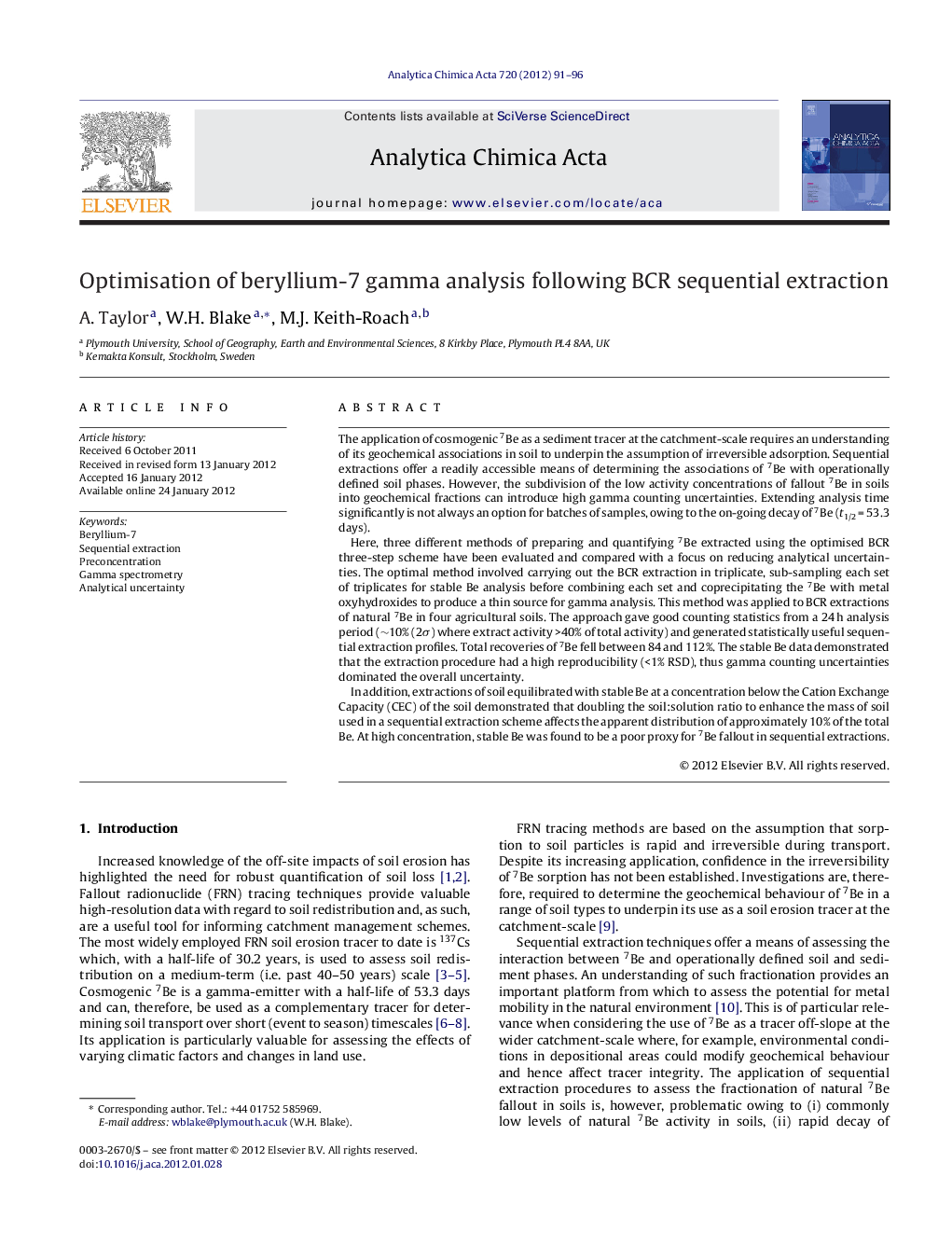| Article ID | Journal | Published Year | Pages | File Type |
|---|---|---|---|---|
| 1165770 | Analytica Chimica Acta | 2012 | 6 Pages |
The application of cosmogenic 7Be as a sediment tracer at the catchment-scale requires an understanding of its geochemical associations in soil to underpin the assumption of irreversible adsorption. Sequential extractions offer a readily accessible means of determining the associations of 7Be with operationally defined soil phases. However, the subdivision of the low activity concentrations of fallout 7Be in soils into geochemical fractions can introduce high gamma counting uncertainties. Extending analysis time significantly is not always an option for batches of samples, owing to the on-going decay of 7Be (t1/2 = 53.3 days).Here, three different methods of preparing and quantifying 7Be extracted using the optimised BCR three-step scheme have been evaluated and compared with a focus on reducing analytical uncertainties. The optimal method involved carrying out the BCR extraction in triplicate, sub-sampling each set of triplicates for stable Be analysis before combining each set and coprecipitating the 7Be with metal oxyhydroxides to produce a thin source for gamma analysis. This method was applied to BCR extractions of natural 7Be in four agricultural soils. The approach gave good counting statistics from a 24 h analysis period (∼10% (2σ) where extract activity >40% of total activity) and generated statistically useful sequential extraction profiles. Total recoveries of 7Be fell between 84 and 112%. The stable Be data demonstrated that the extraction procedure had a high reproducibility (<1% RSD), thus gamma counting uncertainties dominated the overall uncertainty.In addition, extractions of soil equilibrated with stable Be at a concentration below the Cation Exchange Capacity (CEC) of the soil demonstrated that doubling the soil:solution ratio to enhance the mass of soil used in a sequential extraction scheme affects the apparent distribution of approximately 10% of the total Be. At high concentration, stable Be was found to be a poor proxy for 7Be fallout in sequential extractions.
Graphical abstractShowing decrease in analytical uncertainty using the optimal (combined preconcentrated sample extract) method. nv (no value) where extract activities were
